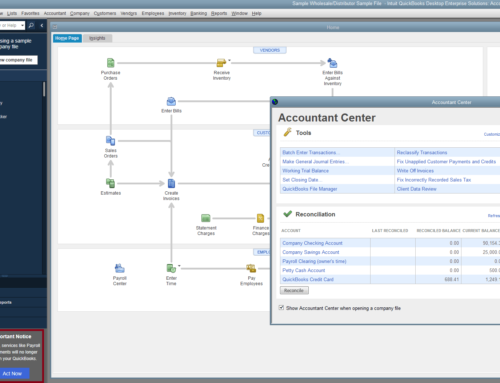We do not have enough quality people equipped with the right skills to fill all the jobs available, and it’s going to get worse–a lot worse very soon.
Many of these worker shortages are found in the skilled trades such as heavy equipment mechanics, construction, truck drivers, healthcare, and certain jobs in the IT sector to name a few.
Most healthcare organizations face critical staffing shortages. The national nursing vacancy rate is approximately 13 percent. Enrollment in RN programs has declined by 50,000 or 22 percent. Finally, the average age of a RN is 43 years old.
The beginning of IT shortages is starting to emerge. Just this year, Google announced it was unable to meet their growth expectations because they could not find enough qualified technicians. As the economy grows many more shortages will develop.
The United States has always been a beacon for skilled talent coming here from overseas. Over the past years, fewer people have requested educational visas, and in turn international student enrollments are decreasing. Part of this is related to September 11, but more significantly other international cities are becoming more economically vibrant and are attracting top talent away from the U.S. For example, New Zealand, which only has a population of approximately 4 million people, now provides a home to over 40,000 Americans.
Shortage of Workers. The aging workforce is an issue businesses need to address. The simple truth is this country is not having enough babies. The growth rate of the workforce has been steadily declining since the 1970s. Both the U.S. Census Bureau and a report from Accenture Consulting indicate the workforce will begin to experience a negative growth rate beginning in the year 2015.
Consider the 45- to 65-year-old workers, who census figures show is the fastest growing demographic. Estimates indicate by year 2020 one out of every two people in the U.S. will be older than 50. These older workers are willing to stay in the workforce longer or even reenter it after retirement. Yet most businesses continue to cater to rapidly diminishing younger workers. A survey conducted by the Society of Human Resource Managers shows 65 percent of companies surveyed exerted no effort to recruit older workers for open positions. Eighty-one percent did not have benefit plans designed with older workers in mind.
Unwanted Employee Turnover. As the economy grows, employee turnover will rise significantly. Research my company has conducted shows a large portion of the workforce is getting ready to “abandon ship” as the economy improves. Employees are looking for better benefits, career advancement, and greater job satisfaction.
The retention survey conducted by Chart Your Course International is available at this link:
Another survey conducted by SHRM, Society for Human Resource Management, showed “83% of employees said it was “extremely likely” or “somewhat likely” they would actively seek new employment once the job market and economy improves.”
Trouble comes in pairs. There are two key issues associated with employee turnover. First is cost, and the second is the loss of productivity.
The Cost of Turnover Costs More Than Most Realize
The cost of attracting, recruiting, hiring, training, and getting new people up to speed is tremendously more costly as well as more wasteful than many realize. This equates to allowing your house to burn down when you could have purchased an inexpensive smoke detector. Prevention is always less expensive and wiser use of your resources.
Labor costs are the most expensive aspect of running a business. Even though all businesses measure profit and loss, they rarely consider how much turnover is actually costing them. Just consider–the annual turnover costs of a typical healthcare system range from $14 million to $27 million per year according to Unifi Network, a subsidiary of Price Waterhouse Coopers LLP.
Studies show it costs $7,000 – $9,000 to replace an hourly low-wage employee and up to $45,000 to replace a mid-level salaried employee. One Silicon Valley company estimates the cost of replacing the average employee is over $125,000. The Saratoga Institute and Hewitt Associates estimate the productivity cost of replacing employees can cost 1 to 2.5 times the salary of the job opening.
Second, productivity is directly tied to retention. Companies with high turnover are at risk for low productivity. Studies from the Gallup organization show employees who have an above-average attitude toward their work will generate 38 percent higher customer satisfaction scores, 22 percent higher productivity, and 27 percent higher profits for their companies.
In spite of the staggering cost of turnover, the majority of most businesses do not have a formal retention program. It is bad business when good employees depart, but stupid not to try to improve it. .
As our labor pool shrinks, employers must focus on creating an environment that lets people work productively and effectively and makes them feel good enough to stay.
Improve your hiring process to create a better match between the individual’s talents and job requirements.
Improve the work environment. In its National Study of the Changing Workforce, the Families and Work Institute showed earnings and benefits have only a 3 percent impact on job satisfaction. “Job quality” and “workplace support” have a combined 70 percent impact than earnings and benefits.
-
- Improve workforce participation rates by providing the environment and benefits attractive to an older workforce.
- Provide time to hire and train those managers to understand what leads to higher retention and greater job satisfaction.
- Hold managers responsible for retention in their departments.
- Start measuring the cost of turnover.
- Focus more energy on the key jobs that have the most impact on profitability and productivity.
- Show people the big picture. Help them understand how their job individually impacts on the overall company mission.
- Promote managers whose behavior is consistent with the organization’s values and philosophies.
- Terminate or reassign managers/supervisors whose behavior is inconsistent with the organization’s vision and values.






